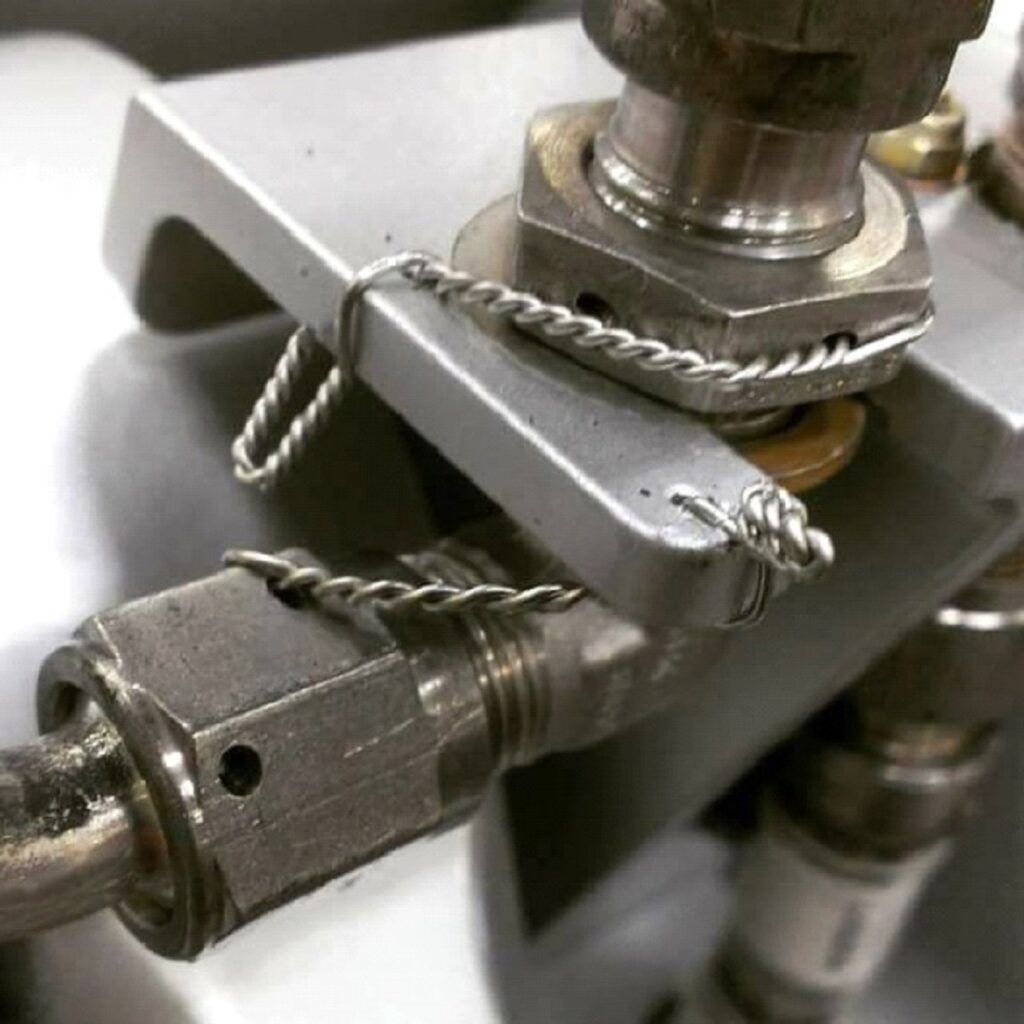
Failure to properly secure aircraft components can compromise powerplant and control system operation, leading to system and component failures. Properly secure aircraft components with safety wire, ensure that hardware locking mechanisms are properly installed on your aircraft, and check them often to confirm they are taut and ready for flight.
Loose hardware or components have led to accidents, many of them fatal. Safety wiring, or positive wire locking, is a type of locking device that is the most positive and satisfactory method of securing or safetying cap screws, studs, nuts, bolt heads, and turnbuckle barrels, which cannot be safetied by any other practical means. It is a method of wiring together two or more units in such a manner that any tendency of one to loosen is counteracted by the tightening of the wire. Safety wire is necessary in areas where a bolt could loosen during vibration. Used properly, it will lock so that the wire remains taut and prevents further movement. Think of it as wearing a belt with your suspenders. If you notice a piece of hardware on your aircraft with loose or missing safety wire, be sure to ask about getting it replaced. Safety wire must be new upon each application. It is single use and disposable. You don’t want to lose functionality of an aileron actuation arm, a throttle cable, or an elevator flight control cable while you’re in flight. Make sure any safety wire and/or hardware locking mechanisms are installed on your aircraft properly, and check that they are taut and ready for flight. Ensuring that hardware locking devices are properly installed can save your life!

Fasteners, Wires, and Fast Facts
Safety wire is not intended to take the place of the proper installation of fasteners. Always make sure that the fasteners or components are tightened to the proper torque first, then install the safety wire. Safety wire should always tend to tighten the bolt, nut, or fastener. When installing or inspecting safety wire, ask yourself, does it pass the “RightyTighty” test, i.e., does the installed safety wire cause the bolt to “Tighty.” If you’re doing owner-performed maintenance, make sure that you know what you’re doing, and get a second set of eyes to look at your work after you’re done. Here’s some more tips to keep things tight:
- Inspect your aircraft carefully before each flight to check that all fasteners and hardware locking devices are properly installed.
- Safety wire should be tight and maintain a light tension when secured. You should notice about 6 to 8 twists per inch with a good safety wire job.
- When inspecting fiber or nylon locknuts, make sure the bolt or stud extends at least the full round or chamfer through the nut. Turnbuckles should either have safety clips or safety wire.
- Castle nuts require a cotter pin to lock them down.
Keep it Locked
There are three basic methods to prevent the disengagement of hardware or components:
1) safety wire,
2) cotter pins, and
3) self-locking nuts.

Wire: usually stainless steel, used on cylinder studs, control cable turnbuckles, and engine accessory attaching bolts.
Cotter pins: used on aircraft and engine controls, landing gear, and tailwheel assemblies, or any other point where a turning or actuating movement takes place.
Self-locking nuts: used in applications where they will not be removed often; repeated removal and installation will cause the self-locking nut to lose its locking feature
Resources
AC 43.13-1B, Acceptable Methods, Techniques – Aircraft Inspection and Repair https://go.usa.gov/xv6An
AMT Handbook – General, FAA-H-8083-30A, Vol. 1, pgs. 7-76 to 7-81 https://go.usa.gov/xvMSr
Source – https://www.faa.gov/news/safety_briefing/2020/media/SE_Topic_20-05_Safety_Wire.pdf






